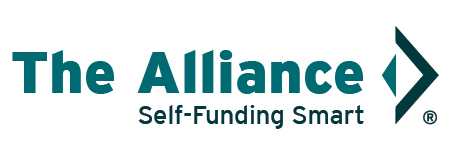How Employers Can Save With Self-Funding Without Sacrificing Employee Care
 By Bobbie Jo Aue, Director of Employer Strategy & Solutions
By Bobbie Jo Aue, Director of Employer Strategy & Solutions
As healthcare costs continue to be the second or third most expensive line item for organizations, employers are increasingly looking for smarter ways to offer benefits without breaking the bank. One of the most effective solutions is self-funding. But self-funding isn’t just about saving money; it’s also a powerful way to design better benefit plans that reward cost-effective care.
In this blog, we’ll explore how self-funding works, how employers can save money through strategic benefit design, and how one employee accessed care at no cost to them thanks to a self-funded plan built with value in mind.
What Is Self-Funding?
In a self-funded (or self-insured) health plan, employers fund the plan rather than paying a premium to a commercial insurer. This means taking on the responsibility – as well as the risks and rewards of paying the medical and prescription drug claims of employees and their covered family members. Self-funding can be a better alternative to the traditional fully insured approach, driving greater transparency, control, and cost savings.
How Self-Funding Saves Employers Money
There are several reasons employers consistently realize cost savings with self-funded health plans, including:
- Utilization-Based Payment
With self-funding, employers are not locked into a fixed monthly premium. Instead, they only pay for the healthcare their employees actually use, which creates more control and potential savings.
- Custom Network Strategies
Self-funding gives employers the flexibility to guide employees toward high-value care through tailored provider networks. The Alliance contracts directly with providers to secure high-quality care at lower costs. Our tiered networks (Smarter NetworksSM) can support up to four customized tiers.
- Data Transparency: Self-funded employers get access to detailed claims data, allowing them to identify cost drivers and address them—whether it’s high ER usage, out-of-network claims, or price variation. The Alliance’s Smarter HealthSM analysis offers employers a customized report of where their employees are going for care and where they could be saving.
- Plan Design Flexibility: Self-funded plans can be customized to reward cost-conscious decisions. For example, employers can set lower copays for high-value care or no-cost preventive services to reduce unnecessary spending while supporting employee well-being. The Alliance helps employers design effective benefit plans that drive savings and increase employee health.
Example Self-Funded Benefit Plan Design
Here’s one example of how a tiered self-funded plan can look. This plan design encourages plan participants to use Preferred-Value Providers, facilities and physicians The Alliance has identified deliver good care at lower costs. When they do, they often pay nothing out of pocket. And since employers pay less for services from these providers, it’s a win-win. Designing an effective benefit plan controls costs and rewards value.
A Real-World Story
Let’s look at a fictional, but realistic, example of how this benefit plan plays out in real life.
Meet Josh. He’s a 34-year-old account manager and weekend soccer player. During a game, Josh made a sharp turn, heard a pop in his knee, and went down. He feared the worst, a torn ligament, and knew he’d need care quickly.
Instead of heading to a high-cost orthopedic clinic or the ER, Josh called his Direct Primary Care Provider (DPC), a Preferred-Value Provider in his company’s network. He was seen the next day at no cost.
His doctor ordered an MRI, also available through an independent imaging center, another Preferred-Value Provider. The MRI was scheduled within 48 hours. The total charge? $600—significantly below the regional average of $2,000. His employer paid the bill directly, and Josh paid $0.
The results showed a mild meniscus tear—painful, but treatable without surgery. His doctor referred him to in-network physical therapy, again through a Preferred-Value Provider. Josh attended six sessions at no cost, regained mobility, and was back on the soccer field in two months.
Had Josh gone the traditional route, specialist first, hospital-based imaging, and physical therapy—the total claim could have exceeded $6,000. Instead, the full episode of care came in under $1,000—all with no cost to Josh and a better recovery experience.
Why It Works
Josh’s story highlights how intentional plan design, provider partnerships, and clear communication can align incentives between employers and employees. Here’s why it worked:
- Josh knew where to go. His employer provided a simple guide to Preferred-Value Providers and emphasized $0 out-of-pocket options throughout the year, not just during open enrollment.
- Providers were aligned. The Primary Care Provider, imaging center, and physical therapist were all chosen based on quality and affordability, not just inclusion in a broad network.
- The plan rewarded smart choices. By choosing Preferred-Value Providers, Josh received seamless care with no out-of-pocket costs and his employer saved thousands of dollars.
Self-Funding: A Win for Employers and Employees
Self-funding is more than a cost-containment strategy; it’s an opportunity to rethink healthcare benefits entirely. By using customized networks and designing benefit plans that reward value, employers can reduce their healthcare spend, improve employee satisfaction, and support healthier outcomes.
Josh’s story isn’t the exception—it’s the new standard for self-funded plans that work smarter. When employees get the care they need at a lower cost, everyone wins.
Interested in exploring self-funding for your organization? Reach out to us.



 This post is locked to comments.
This post is locked to comments.
